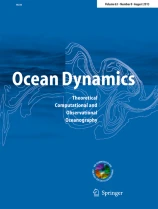IWMO 2015 was held in the pristine campus of the
Australian National University, Canberra, Australia,
from June 1–5, 2015. Despite the negative Coriolis spin
that many of us from the northern half of the globe
experienced for the first time, we were positively
impressed by the vastness and beauty of Australia and
the kindness and friendliness of its people. Late fall
in Canberra displayed spectacular starry nights and
brisk sunny days. The workshop was attended by more than
80 participants from 16 countries around the globe.
Seventy papers including both oral and posters were
presented, covering a very broad range of topics on
observations and models: climate variability, basin
circulation and coastal oceanography, air-sea
interaction, sea-ice dynamics, sediment transport,
tropical cyclones, biogeochemical-physical coupling,
boundary currents, sea level rise, extreme events, ocean
prediction, and others. As in the past years, many of
the participants were students and young scientists—all
presented very high-quality research, and three were
selected to receive the Outstanding Young Scientist
Awards (OYSA). In order that some of us may have a
chance to also receive some recognition for our hard
work, new this year were three Best Presentation Prizes
(BPP), given to any presenters deemed qualified by the
audience to receive the honors. Also, new this year were
special lunch-time sessions when young and more senior
scientists exchanged ideas on a wide range topics.













